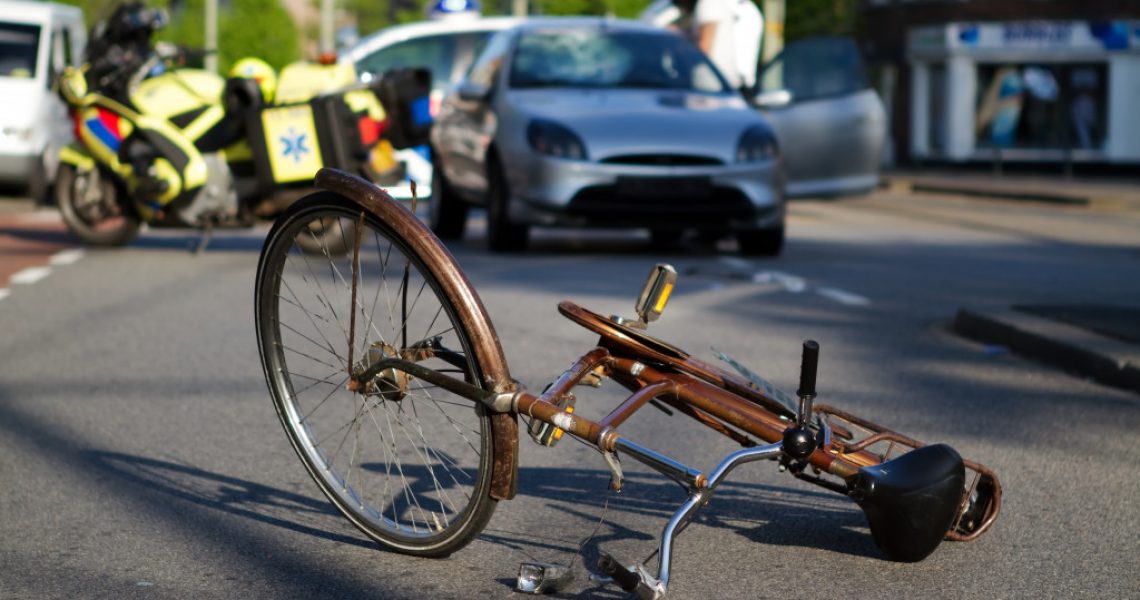Cycling is a great sport that can help keep you fit, but it does have its risks. Cyclists are more likely to suffer from severe injuries than other sportspeople because their bodies are not supported by helmets and padding like football players or hockey players. Here are some of the most common injuries faced by cyclists.
Head and Neck Injuries
The most common injuries in bicycle accidents are head and neck injuries, including concussions, brain damage, lacerations, and hematomas. A concussion is a traumatic brain injury that occurs when the head suddenly accelerates or decelerates. The resulting damage causes neurons to fire abnormally, which disrupts the transmission of signals throughout the brain. Concussions can range from mild to severe depending on how long they stay untreated or may require surgical intervention to heal properly.
In addition to concussions, cyclists who suffer head trauma may also have fractures that occur when their skulls collide with another object, such as pavement or another rider’s bike (known as an ‘open’ fracture). These fractures often require surgical repair with plates, bolts, screws, pins, bone grafting, and tissue flaps surgery. In these cases, surgical intervention may be necessary to clean and repair the wound and set the bone back into place before it heals properly.
Shoulder Injuries
Shoulder injuries are common among cyclists. These injuries can be caused by a fall or impact with another cyclist, pushing you off your bike and causing you to land on your shoulder. Shoulder injuries can also result from repetitive motion, such as when cycling up and down hills.
A shoulder injury can be treated at home or by a doctor. If the injury is minor, you may be able to treat it at home with rest, ice, and compression. You should see your doctor immediately if you have more severe pain or swelling.
Also, if there is any joint instability in your shoulder, it should be assessed by a physician. A radiology exam can be performed to check for any fractures. An MRI (magnetic resonance imaging) scan can also be done to look for soft tissue damage, such as a rotator cuff tear. Depending on the severity of the injury, you may need surgery or physical therapy to restore function and movement.
So whether it’s a minor injury or not, it’s best to consult your doctor immediately to get the best treatment as early as possible.
Back and Spine Injuries
The back and spine are susceptible to injuries while riding a bicycle, especially regarding the seat. This can happen in several ways:
- You may have a poorly adjusted seat that is too high or low and doesn’t allow you to sit in an ergonomic position.
- You might have a poorly adjusted handlebar that causes you to lean forward too much and put undue pressure on your lower back.
- Your bike frame could be slightly bent, causing structural issues with the bike and putting pressure on specific parts of your body during rides (for example, if there is uneven pressure on one side of the saddle).
If you are a serious cyclist, you must have your bicycle professionally fitted to your body. This will ensure that there is no pressure on any part of your body while riding and that you can enjoy the ride without worrying about discomfort or injury.
Fractures and Broken Bones

The most common injury cyclists can sustain is a fracture or broken bone. Sometimes, they’re called open fractures because they break the skin and expose the bone. Open fractures are more severe than closed ones, which don’t break the skin but still cause pain and discomfort. Open fractures are treated with surgery to reset any broken bones before putting them in casts or splints for healing to begin. Depending on the patient’s injury, it may take several weeks before they can walk without crutches or a wheelchair.
Closed fractures also need time to heal, but there’s less chance of infection due to open wounds caused by accidents. The doctor will put the arm in a sling while wearing long sleeves so that nothing gets caught on anything else during recovery time. This makes it easier when getting ready each morning.
Nervous System Injuries
Nervous system injuries are the most common type of cycling accident, causing a whopping 30% of crashes and nearly one-third of all crash fatalities. Common nervous system injuries include concussion and spinal cord damage, but sometimes they can be more severe. Nervous system trauma can lead to paralysis or brain damage, often requiring extended hospitalization (sometimes years) and rehabilitation.
Nervous system injuries can result from a single accident or the accumulation of many minor crashes. Because cyclists tend to spend more time on their bikes than other athletes, they are at higher risk for developing spinal cord damage. This is especially true for BMX (Bicycle MotoCross) riders who perform high-risk tricks and flips.
Key Takeaways
So, what should you do to avoid injury? The most important thing is to ensure that your bike is the right size for you and in good condition. Ensure your tires are adequately inflated, and don’t skimp on quality gear like helmets or shoes. If something feels wrong, get it checked out immediately by someone who knows bikes. Once everything is planned right and safely, you can enjoy your favorite leisure activity. Still, practice caution at all times to avoid getting stuck on the road or prevent any ugly situations that may occur.

